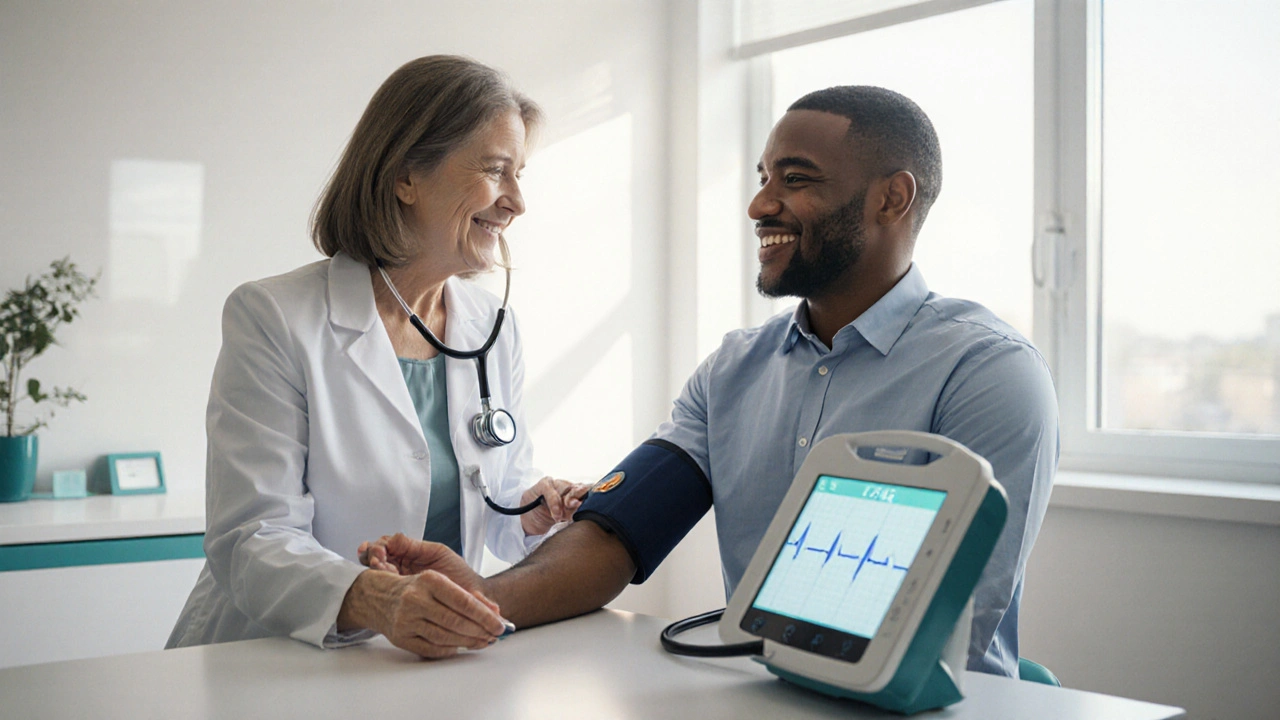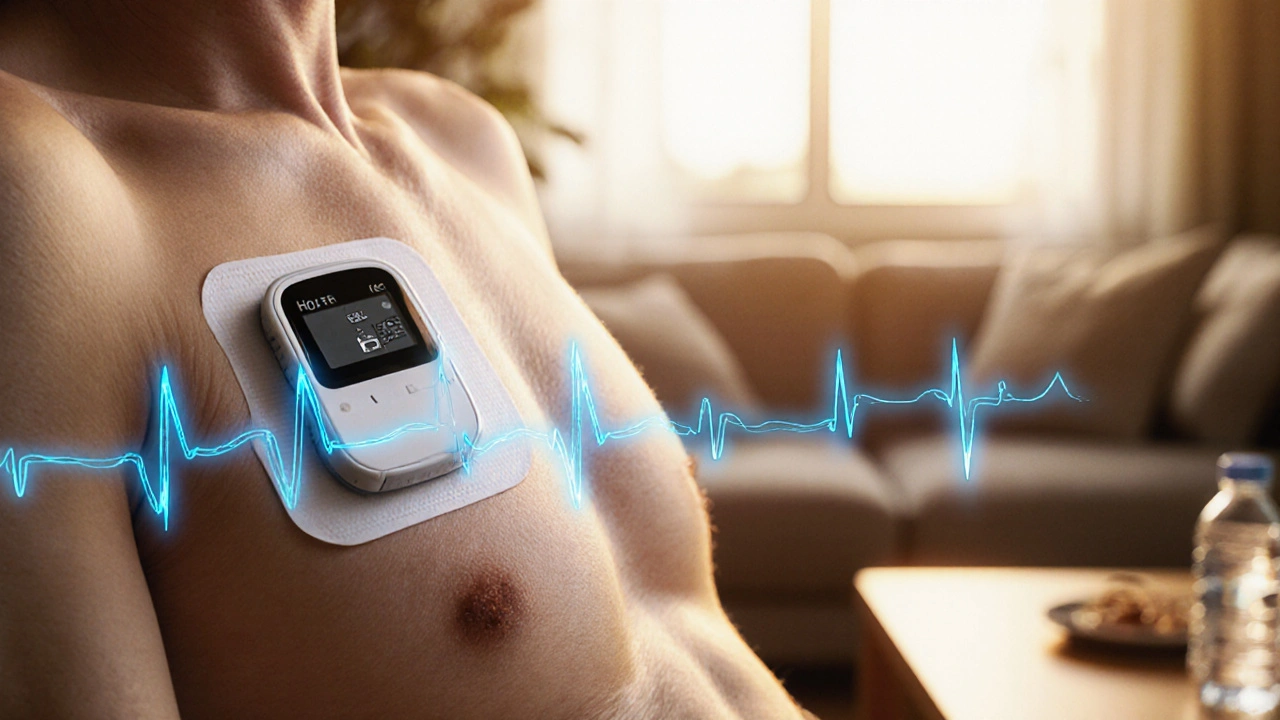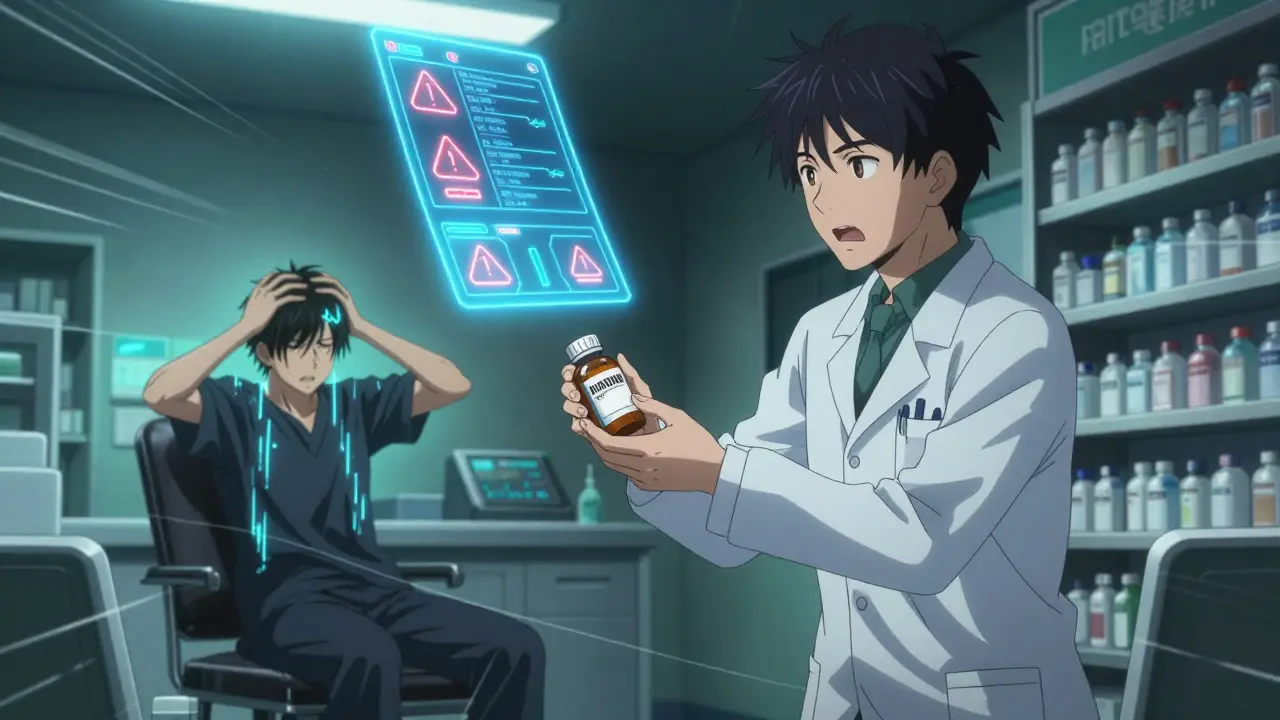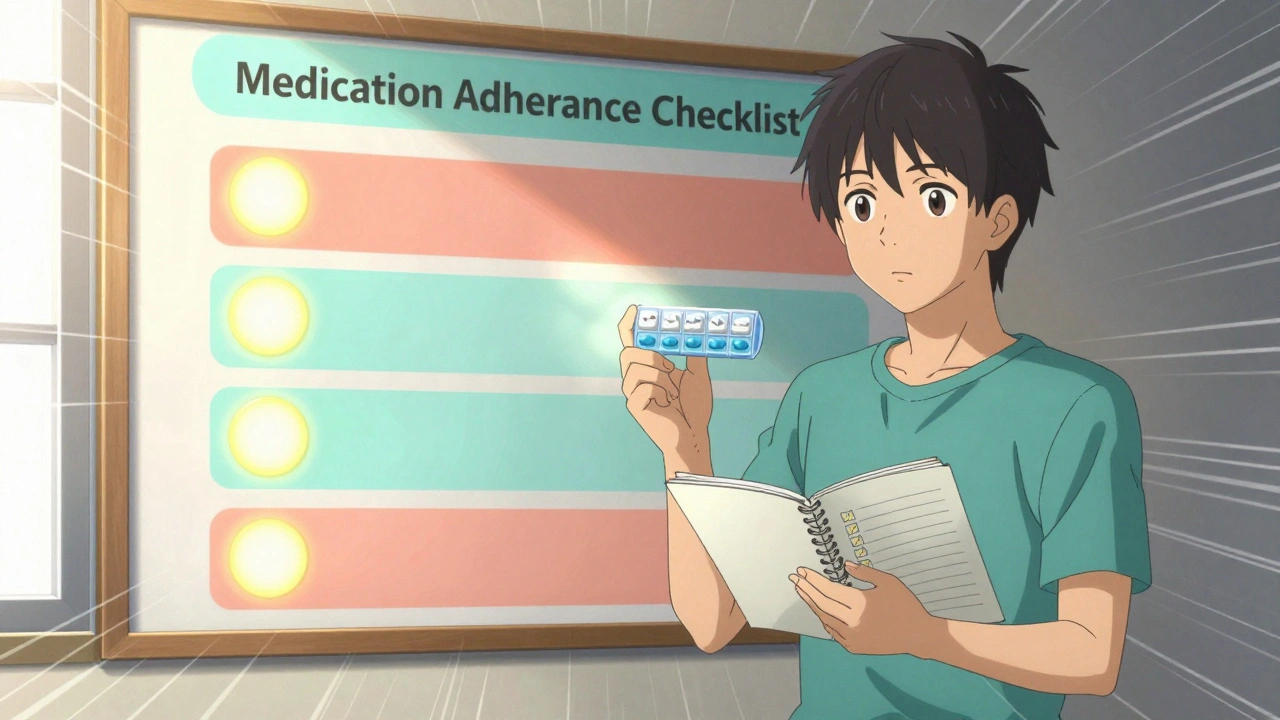Why Routine Heart Checkups Are Crucial for Detecting Arrhythmia

Heart Rhythm Risk Assessment Tool
Complete Your Risk Profile
Your Risk Assessment
Every year, an estimated 300,000 Australians live with an undiagnosed heart rhythm problem, and many of them could have been saved with a simple screening. The culprit is often a silent arrhythmia - an irregular heartbeat that may show no symptoms until a serious event occurs. That’s why a heart checkup isn’t just a nice‑to‑have; it’s a lifesaver.
Key Takeaways
- Routine heart checkups can catch arrhythmia before it causes complications.
- Electrocardiograms and Holter monitors are the gold standards for early detection.
- People over 40, those with hypertension or diabetes, and anyone with a family history should be screened yearly.
- Lifestyle tweaks-exercise, diet, stress management-reduce the risk of developing arrhythmia.
- If an irregular rhythm is found, prompt referral to a cardiology specialist improves outcomes.
What a Routine Heart Checkup Looks Like
Routine Heart Checkup a regular medical assessment that evaluates cardiac function, blood pressure, cholesterol, and rhythm typically includes three core steps: a conversation about symptoms and risk factors, a physical exam, and a series of diagnostic tests. In a primary care setting, the doctor will first measure Blood Pressure the force of blood against artery walls, expressed in mmHg and request a Cholesterol Test a blood panel that quantifies LDL, HDL, and triglycerides. Both metrics are strong predictors of cardiac stress, which often triggers arrhythmic episodes.
Why Arrhythmia Can Slip Past Traditional Exams
Unlike a heart attack, many arrhythmias don’t produce chest pain or obvious shortness of breath. The most common types-atrial fibrillation, premature ventricular contractions, and supraventricular tachycardia-can be intermittent. A doctor listening with a stethoscope might hear a normal rhythm if the episode isn’t happening at that moment. This is where dedicated rhythm‑monitoring tools become essential.
Diagnostic Tools That Spot Irregular Beats
Electrocardiogram a non‑invasive test that records the heart’s electrical activity over a few seconds (often called an ECG) is the frontline test. It captures a snapshot of the heartbeat, revealing patterns that indicate atrial fibrillation, heart block, or other disturbances. However, because some arrhythmias are fleeting, a 10‑second ECG may miss them.
Enter the Holter Monitor a portable device that continuously records ECG data for 24‑48hours. By extending the observation window, the Holter uncovers episodes that occur sporadically-like a brief bout of palpitations after caffeine. For longer‑term monitoring, event recorders or wearable patches can track rhythms for weeks. Each tool has a trade‑off between convenience and diagnostic yield.
| Tool | Typical Use | Duration | Strengths |
|---|---|---|---|
| Electrocardiogram (ECG) | Initial screening in clinic | 10seconds | Quick, inexpensive, widely available |
| Holter Monitor | Detect intermittent arrhythmias | 24‑48hours | Continuous recording, high sensitivity |
| Event Recorder | Patient‑triggered recording | Weeks to months | Targets symptoms when they occur |
| Wearable Patch (e.g., Zio Patch) | Long‑term, hands‑free monitoring | Up to 14days | Comfortable, high compliance |

Who Should Get Screened and How Often
Guidelines from the Australian Cardiac Society (2024) recommend that anyone over 40 should have a baseline rhythm assessment. Additional risk factors that trigger more frequent testing include:
- History of hypertension or diabetes
- Family history of atrial fibrillation or sudden cardiac death
- Existing heart disease, such as coronary artery disease or valve problems
- Frequent palpitations, light‑headedness, or unexplained fatigue
For low‑risk adults (age<40, no comorbidities), a routine checkup every 3‑5years is sufficient. For high‑risk patients, an annual ECG combined with a quarterly blood pressure check is advisable.
Lifestyle Factors That Influence Rhythm Health
Even with perfect medical care, lifestyle choices can tip the balance toward arrhythmia. Studies from the University of Sydney (2023) show that people who consume more than two caffeinated drinks daily have a 12% higher odds of developing premature beats. Similarly, long‑term binge drinking raises the risk of atrial fibrillation by up to 30%.
Conversely, regular aerobic exercise-like brisk walking for 150minutes per week-improves autonomic tone and reduces irregular beats. A balanced diet rich in omega‑3 fatty acids, found in fish and flaxseed, also supports electrical stability of the heart.
After an Arrhythmia Is Detected: Next Steps
Discovery of an abnormal rhythm starts a clear pathway. First, the primary doctor refers the patient to a Cardiology the medical specialty focused on heart diseases and rhythm disorders specialist. The cardiologist may order advanced imaging-such as an echocardiogram or cardiac MRI-to assess structural issues that could underlie the rhythm problem.
Treatment options vary:
- Medication (e.g., beta‑blockers, anti‑arrhythmic drugs) to control heart rate.
- Catheter ablation, a minimally invasive procedure that isolates faulty electrical pathways.
- Lifestyle modifications, including reduced alcohol, caffeine moderation, and stress‑relief techniques.
Follow‑up appointments are crucial. Most specialists schedule a repeat ECG or Holter after three months to confirm that the rhythm remains stable.
Common Myths About Heart Rhythm Screening
Myth 1: “If I feel fine, I don’t need a checkup.” False. Many arrhythmias are silent, and early detection prevents strokes and heart failure.
Myth 2: “Only older people get arrhythmias.” Younger adults with high‑stress jobs or athletic hearts can also develop rhythm issues.
Myth 3: “Wearables replace medical tests.” Consumer wearables are great for awareness but lack the diagnostic precision of an ECG or Holter.
Frequently Asked Questions
How often should I get an ECG if I have no symptoms?
For people under 40 with no risk factors, an ECG every 3‑5years is adequate. If you have hypertension, diabetes, or a family history of arrhythmia, aim for an annual ECG.
Can a routine blood test reveal arrhythmia?
A blood test can flag conditions that increase arrhythmia risk-like thyroid dysfunction or electrolyte imbalances-but it does not directly detect irregular heartbeats. An ECG or monitoring device is needed for diagnosis.
Is a Holter monitor painful?
No. The device uses adhesive electrodes placed on the chest and records continuously for 24‑48hours. Most people report mild skin irritation but no pain.
What lifestyle changes reduce the chance of atrial fibrillation?
Limit alcohol to no more than two drinks per week, cut back on caffeine, maintain a healthy weight, exercise regularly, and manage stress through techniques like meditation or yoga.
Are there any risks to undergoing a routine heart checkup?
The procedures are non‑invasive and safe. The only minor risk is skin irritation from electrode patches during prolonged monitoring.






Comments
Pat Merrill
October 2, 2025 AT 18:46Routine heart checkups are more than just a bureaucratic checkbox; they’re a subtle invitation to dialogue with our own biology.
When you sit in that quiet exam room, the machine’s gentle beeps become a metronome for self‑awareness.
Every heartbeat carries a story, and the occasional skipped note can hint at a deeper narrative that we’d rather not ignore.
Skipping these appointments is akin to refusing to read the footnotes of a novel you claim to love.
While some may argue that they feel perfectly fine, the silent arrhythmia often tours the body unnoticed, like an uninvited guest at a party.
Detecting irregularities early can prevent a cascade of complications, ranging from fatigue to stroke.
Moreover, the data from an ECG or Holter monitor provides clinicians a concrete map, not just a speculative guess.
Think of it as updating the software of your heart’s operating system.
When the rhythm is regular, you gain confidence; when it’s off, you get a chance to intervene before disaster strikes.
Studies show that early detection dramatically reduces emergency interventions.
And yes, the process is quick, non‑invasive, and often covered by health insurance, so there’s hardly any excuse.
It’s almost comical how we neglect something that can be checked in the time it takes to brew a coffee.
Imagine a world where everyone got screened every two years – the statistics for sudden cardiac events would plummet.
So, the next time you receive that reminder, treat it as a friendly nudge from your future self, not a nagging chore.
Because, frankly, the alternative is letting fate decide for you.
Vicki Roth
October 3, 2025 AT 16:59Routine ECGs are a solid preventive measure. They fit easily into an annual physical.
Vishal Bhosale
October 4, 2025 AT 15:12Check heart every few years its simple and cheap
Garima Gauttam
October 5, 2025 AT 13:26Everyone says screening is vital but most never need it anyway
Georgia Nightingale
October 6, 2025 AT 11:39While the prior point underscores practicality, it’s also true that a brief ECG can uncover hidden threats that a casual self‑assessment would miss.
Chris Kivel
October 7, 2025 AT 09:52I totally agree, getting a quick ECG can catch hidden issues before they become scary.
sonia sodano
October 8, 2025 AT 08:06Well actually skipping checkups won’t make you immortal, but why not be safe?
Praveen Kumar BK
October 9, 2025 AT 06:19It’s worth noting that the phrase “routine heart checkups” should be hyphenated as “routine‑heart checkups”. Also, “arrhythmia” is pluralized correctly when referring to multiple conditions.
Viji Sulochana
October 10, 2025 AT 04:32I think we all should do a heart chekcup atleast once a yeer its easy and cheap
Stephen Nelson
October 11, 2025 AT 02:46Oh, look, another article telling us we must all become cardiac detectives. Because who doesn’t love a good mystery about their own pulse?
Fredric Chia
October 12, 2025 AT 00:59Routine cardiac assessment is recommended for individuals over forty years of age.
Hope Reader
October 12, 2025 AT 23:12Sure, detective work is fun 😄 but catching silent arrhythmias beats any thriller.
Marry coral
October 13, 2025 AT 21:26Stop ignoring the signs and get checked already.
Emer Kirk
October 14, 2025 AT 19:39It hurts watching people skip the simple test they think it’s not needed but they could die